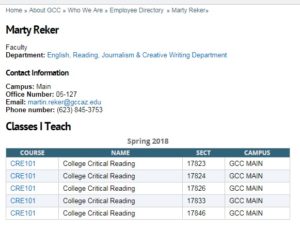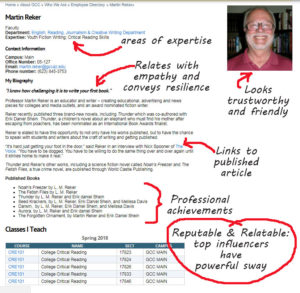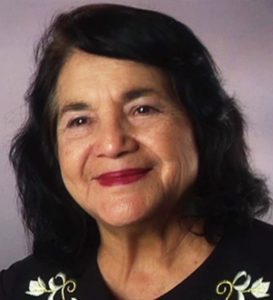Welcome back to the final week of the” One Thing” you can do to raise enrollment, a six week “how-to” series.
The NUMBER ONE REASON employees cite for NOT completing their employee bio page:
Now you know!
Your employee Bio Page is the ONE THING you can do to influence the student decision-making process, raise enrollment, and raise GCC’s reputation in an increasingly crowded marketplace.
If you’ve been following along, you know by now that completing your employee bio page is a seemingly SMALL thing that pacts a powerful, influential punch.
But if you are just joining us, follow these links to catch up on this data-driven strategy:
Week 1: What’s on your GCC bio page right now?
Week 2: Quotes – their power to connect.
Week 3: How to get a rep.
Week 4: Your face.
Week 5: The “One Thing” Before and After
Here we go – Week 6 – the final step: today you find out how to copy and paste your story into a simple Employee Biography online form, and click “submit”.
Here’s what you’ll need:
- First name
- Last name
- GCC email address
- Credentials (such as MS, Ph.D.)
- Biography (Hint: Review Weeks 2, 3 and 5, and be relatable, not stiff)
- Areas of Expertise (Special knowledge or field of study)
- Office Hours
- Headshot (This is a photo of your face. It should be cropped to a perfect square. You will click to upload a jpg, which will be resized to 280×280 pixels. See Week 4 for photo tips)
- Personal Website URL (This is a separate step: To include a link to your work-related Website, login to your Maricopa profile using the Manage My Account tool, and add the url there. It may take up to a week for the link to appear on your Employee Bio page, depending on how often the Web Team refreshes the Website.)
Ready? Use this form to update your bio page. (The link to this form is listed here on the GCC website.)
That’s it! 
For those itching to know the broader impacts, read these final bits:
Dear Faculty, you, perhaps more than anyone else, are uniquely empowered to factually communicate GCC’s reputation by explicitly stating your credentials and experience, why you continue to choose to teach at GCC, your areas of passion, and your teaching methods. You have been empowered to give the community concrete reasons to choose you, and GCC, over every other institution. The broader impacts of doing this one thing includes reputation, enrollment, media attention, and funding.
College Reputation
Your employee bio page impacts the reputation of the college. Faculty completing their Employee Biography pages serves to significantly elevate GCC’s reputation and raise its credibility on a local, national and international scale. We need to tout the talent and body of experts who teach at GCC. It hinders efforts to fill classes when faculty are too humble to talk about their personal contributions and proudest moments.
Student Enrollment
Your employee bio page impacts enrollment. When comparing colleges, student not only look at cost, location and facilities, but they also compare faculty between colleges. “Who will be teaching me? What are their qualifications? Will I like them?” Students want to pick the “right” instructor and are looking for a reason to choose you. Your employee bio page empowers you to teach students how to think about you. Be relatable.
Media Attention
Your employee bio page impacts media attention. The enormity of all faculty specifying their “areas of expertise,” on their employee bio page cannot be emphasized enough. Members of the Media are using google to find experts to weigh in on current events and issues. For example, a USA Today reporter used a google search to find an expert on “Living Libraries,” and GCC popped up in the top of the search results. “Everybody has a fascinating story, all of us,” said GCC faculty member Heather Merrill in a USA Today article on the Human Library. “Our students are craving this, and they’re craving help having these conversations.”
Funding Awards
Your employee bio page impacts the GRANT AWARD decision-making process. It is common for REVIEWERS to search the web for insight into the applicant’s reputation. When a GCC Faculty member applies for grant funding, they are competing against other institutions to win that award. Faculty bio pages provide an opportunity to showcase your integrity and past performance, both of which work to influence the REVIEWER COMMITTEE’s decision to award a grant.
















